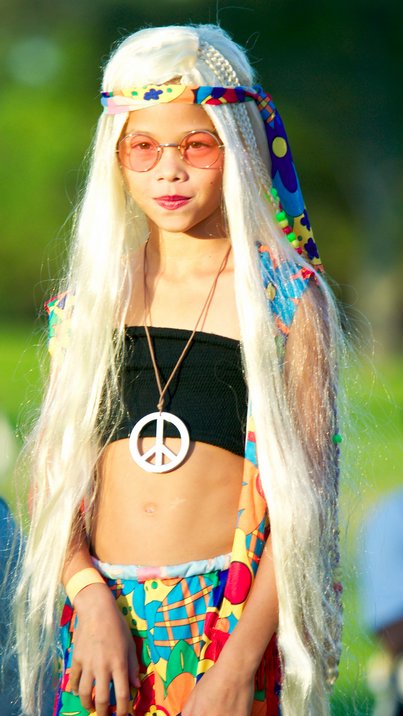Antecedents
The foundation of the hippie movement finds historical precedent as far back as the counterculture of the Ancient Greeks, espoused by philosophers like Diogenes of Sinope and the Cynics. Hippies were also influenced by the ideas of Jesus Christ, Hillel the Elder, Buddha, St. Francis of Assisi, Krishna, Henry David Thoreau, Madame Blavatsky, Gandhi, and others.
In the 1890s, a European back-to-nature movement began, inspired by the works of Friedrich Nietzsche, Goethe, Hermann Hesse, and Eduard Baltzer. Thousands of young Germans rejected the rapid trend toward urbanization and attempted to return to the natural, pagan, and spiritual life of their ancestors.
During the first several decades of the twentieth century, these beliefs were introduced to the United States as Germans settled around the country, some opening the first health food stores. Many moved to Southern California where they could practice an alternative lifestyle in a warm climate. In turn, young Americans adopted the beliefs and practices of the new immigrants. One group, called the "Nature Boys", took to the California desert, raised organic food, and espoused a back-to-nature lifestyle. Eden Ahbez, a member of this group, wrote a hit song called Nature Boy, which was recorded in 1947 by Nat King Cole, popularizing the homegrown back-to-nature movement to mainstream America. Eventually, a few of these Nature Boys, including the famous Gypsy Boots, made their way to Northern California in 1967, just in time for the Summer of Love in San Francisco.
Another influence were members of the Jamaican Rastafari movement who, while openly espousing Emperor Haile Selassie I of Ethiopia as God, also wore long hair (called dreadlocks), smoked cannabis as a sacrament, rejected the establishment (which they called Babylon) and espoused a back-to-nature and back-to-their-African-roots philosophy. Due to large scale immigration from Jamaica to the UK during the 1950s, this movement influenced the developing UK hippie movement, with contacts often formed when young whites would buy cannabis from black communities.
Beat generation

The Beat Generation gradually gave way to the Sixties counterculture, accompanied by a shift in terminology from "beatnik" to "hippie." Many of the original Beats remained active participants, notably Allen Ginsberg, who became a fixture of the anti-war movement. On the other hand, Jack Kerouac broke with Ginsberg and criticized the 60s protest movements as "new excuses for spitefulness". Through a variety of popular media, including television shows such as the Many Loves of Dobie Gillis, the beat image became somewhat commercialized, and also a large influence on members of the new counterculture. Bob Dylan became close friends with Allen Ginsberg, and Ginsberg became close friends with Timothy Leary, helping him distribute LSD.
In 1963, Ginsberg was living in San Francisco with Neal Cassady and Charles Plymell at 1403 Gough St. (Charles Plymell a few years later helped publish the first issue of R. Crumb's Zap Comix, then moved to Ginsberg's commune in Cherry Valley, NY, in the early 1970s). Around that time, Ginsberg connected with Ken Kesey, who was participating in CIA sponsored LSD trials while a student at Stanford. Neal Cassady was the bus driver for Ken Kesey's Merry Pranksters, and he attempted to recruit Kerouac into their group, but Kerouac angrily rejected their invitation and accused them of attempting to destroy the American culture he celebrated.
According to Ed Sanders, the change in the public label from "beatnik" to "hippie" occurred after the 1967 Human Be-In in San Francisco's Golden Gate Park, where Allen Ginsberg, Gary Snyder and Michael McClure led the crowd in chanting "Om". Ginsberg was also at the 1968 Democratic Convention, and was friends with Abbie Hoffman and other members of the Chicago Seven. Stylistic differences between beatniks, marked by somber colors, dark shades, and goatees, gave way to colorful psychedelic clothing and long hair worn by hippies. While the beats were known for "playing it cool" and keeping a low profile, hippies became known for "being cool", and displaying their individuality. Although the beats tended to be essentially apolitical, hippies became active in the civil rights and anti-war movements.

